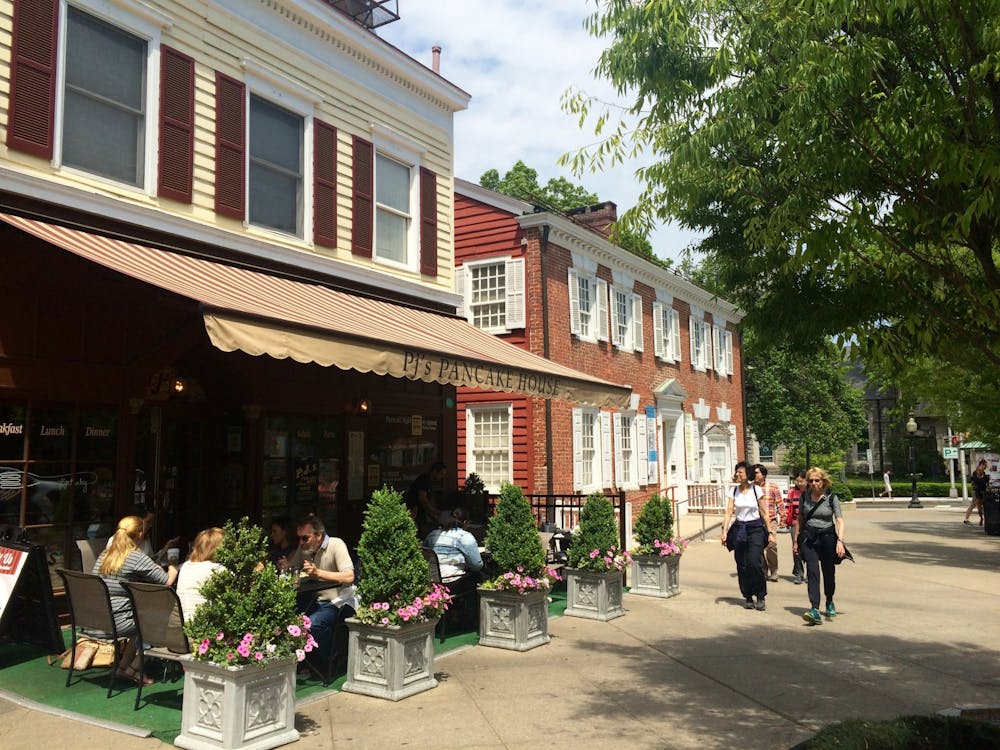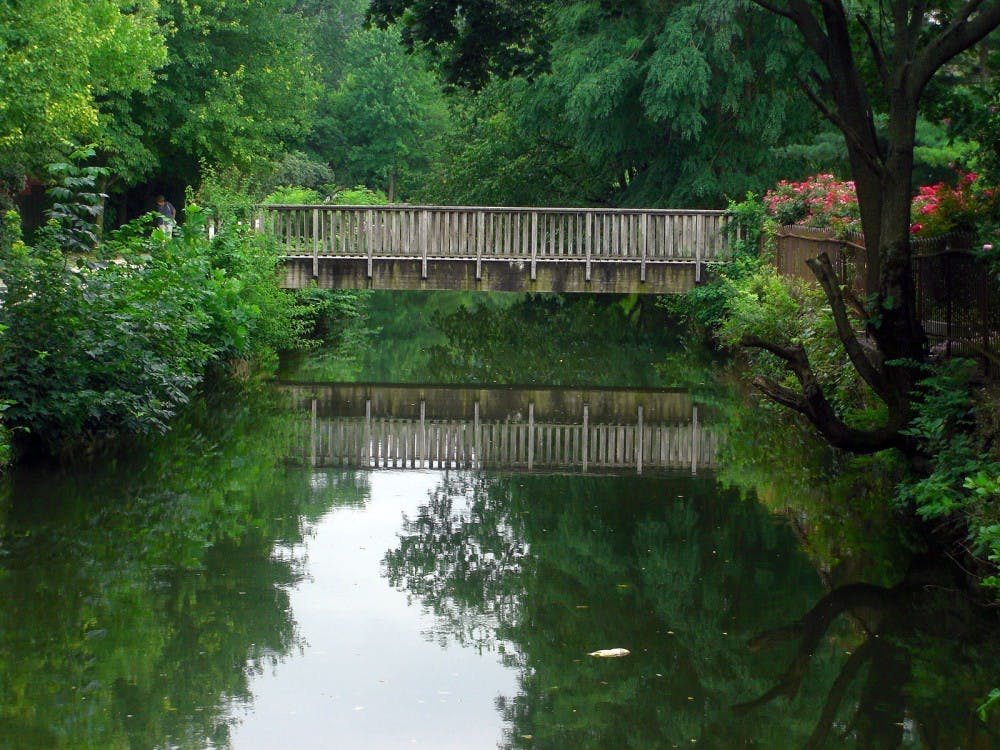As a sculpture major, Rachel Linton '03 gets her own studio on the third floor of 185 Nassau. At the moment, four lengths of cellophane — red, purple, blue, and green — cascade from the ceiling and intertwine halfway to the floor. The braided ends trail the floor like the train of a gown.
"It's about the harmony of the different strains — colors — coming together," explains Linton. "But it also looks a bit like DNA."
Sculptures are born in many ways. Sometimes, the conception is entirely intuitive. "It may begin with a striking image and an intense emotional experience embedded in the image," Linton says.
She might envision an abstraction of a natural form, like DNA. Or she might come up with a metaphysical puzzle to solve: "What might a small quantity of light or dark look like?" "What might a container of light look like?" or "What if you could hold light between your hands?"
It's not easy to translate an invisible conception into a material form. Linton must decide how to best embody her vision — how to guide it into the realm of the real so that it emerges intact, surviving the transition from mind to matter.
Sometimes the simplest approach is best. Once Linton asked herself, "How are thoughts transformed into words, words into actions, and actions into consequences?" The resulting sculpture was three halogen spotlights illuminating three words — "funny," "how," and "small" — whose shadows were projected, in enlarged form, on a far wall. "Funny how small things become so large," she explains.
The artistic vision determines the choice of materials — the visual vocabulary. Linton likes materials that manipulate light and shadow and imagery: mirrors, lamps, magnifying lenses, projectors. "I'm a magpie," she says. "Magpies like shiny objects. When you raid a magpie nest, you always find bits of tinfoil or, once in a while, somebody's wedding ring."
The magpie within her collects Mylar, Plexiglass, porcelain and tinted glass — not to mention phosphorescent Play-Doh and the shiny aluminum soy sauce tins from Sakura Express. And, of course, cellophane — in red, yellow, silver, purple, magenta and iridescent pink.
Linton's favorite materials are those she can lift out of context — those with what she calls "nebulous associations." She likes to investigate embedded metaphors. "For example: cellophane. It has its utilitarian packaging function — but you can also use it to see the world in different colors."
She gives another example: drowning. "A person drowns in water — but they may also drown in work, or sorrow."
But what would a sculpture about drowning look like?
"It would be a sculpture you would enter," she says, after some thought. "A plaster cell. A cylinder. There would be a clear dome at the top, covered with translucent fabric, diffusing the entering light. It would be like light seen from the bottom of the ocean."

Linton usually develops several ideas at one time. "It's like sitting on a lot of eggs and waiting for one to hatch," she says. "An idea hatches when a mature concept intersects with the availability of materials and the constraints of physics. Choosing a project is a little like deciding whom you're going to marry."
As with marriage, sentiment — here, artistic sentiment — meets the mundane. Once Linton settles on a project, she's off — off to the hardware store, the plastics store, the craft store, the light fixture store — on quests for everything from glass to Silly Putty to Aerogel, the silica insulator used in spacecrafts.
She then heads to the tech shop in 185 Nassau to use the power tools. It's time to build. But even then, the course of the project is uncertain. "You're always bargaining with materials and logistics — and physics," she says.
The laws of physics are especially tiresome. "I don't think I like gravity very much," she adds. "I'm always wanting things to float. And they won't."
Sometimes materials won't cooperate either. For her JP, for example, Linton envisioned several multicolored "clouds" suspended from the ceilings of different rooms. "The idea was that we attribute character to these amorphous forms called clouds," she says. "We see shapes in them. We project emotions onto them. We humanize them."
Linton made sample clouds by covering helium balloons with cotton candy. "They really did look like clouds. But what I didn't know was that cotton candy disintegrates in a matter of hours," she says, handing me the remains of a cloud — a balloon sticky with sugar.
The actual construction of a sculpture is full of discovery and modification. As ideas take physical form, they evolve. She notes, "Sometimes the material takes off and does something really cool on its own."
But the transition to reality rarely does justice to the original conception. "A sculptor may only hit it exactly right three or four times in an entire career," Linton says. "But it's still fun to see the piece come alive and the metaphor come out."
In the center of the studio is one of Linton's sculptures from last semester. A colorless Plexiglass cube balances on one vertex on a white pedestal. A crate of soda bottles is wedged inside the cube. The crate looks like it is floating.
The sculpture radiates chilly perfection — the ranks of bottles are serene in their Plexiglass prison. It's about the idea of the ideal itself — an ideal on display for all to see, yet alienated and unreachable.
"It was the first sculpture of mine that really worked," says Linton. The bottles float exactly as she originally envisioned them. "There are a lot of dead ends in sculpture. But every once in a while something works out. I remember I was on a high for two weeks after finishing it."
As for the cotton candy fiasco, she's only slightly regretful: "I thought it would have been fun to eat my JP afterwards."







